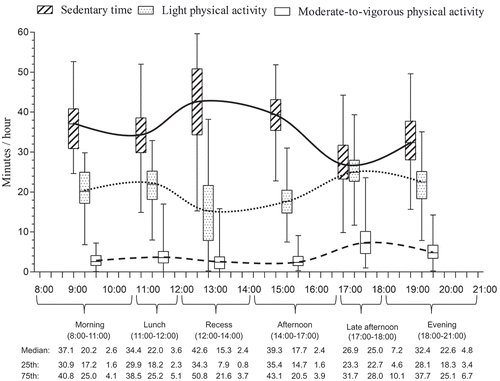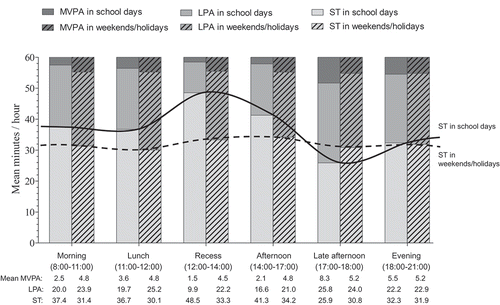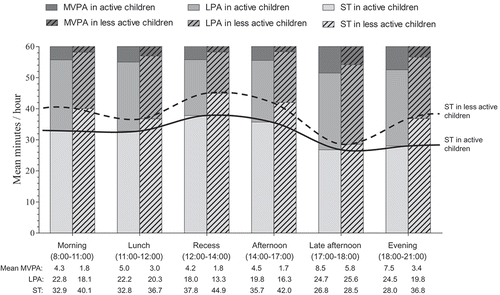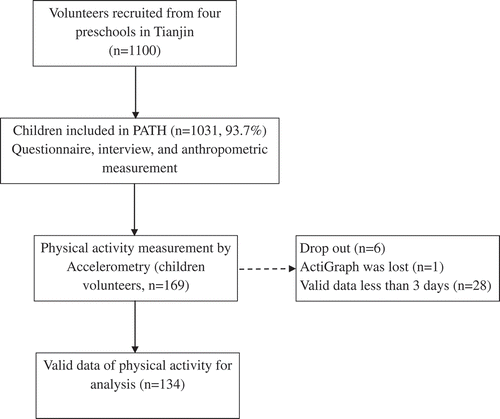Figures & data
Table 1. Characteristics of the study population.
Table 2. Characteristics of MVPA bouts of the study population.
Figure 2. Daily physical activity patterns per time segment.
Moderate to vigorous physical activity (MVPA), light physical activity (LPA), and sedentary time (ST) are given per time segment with the median, the 25th and 75th percentile, and minimum and maximum. All time segments differed significantly (p < 0.05).

Figure 3. Daily physical activity patterns for school days and holidays.
Moderate to vigorous physical activity (MVPA), light physical activity (LPA), and sedentary time (ST) are given per time segment for school days and weekends/holidays, with the mean per behavior and per group. Only the evening (18:00–21:00) showed no significant differences for ST, LPA, and MVPA between school days and weekends/holidays (p > 0.05). P-values are based on linear mixed models and adjusted for sex, age, and season. Statistical testing for MVPA was performed using Ln-transformed MVPA.

Figure 4. Daily physical activity patterns for active children and less active children.
Moderate to vigorous physical activity (MVPA), light physical activity (LPA), and sedentary time (ST) are given per time segment for active children and less active children, with the mean per behavior and per group. Only the segments of lunch (11:00–12:00) and late afternoon (17:00–18:00) for LPA, and the segment of late afternoon for ST showed no significant differences between active children and less active children (p > 0.05). P-values are based on linear mixed models and adjusted for sex, age, and season. Statistical testing for MVPA was performed using Ln-transformed MVPA.

Figure 5. Daily physical activity patterns for overweight and non-overweight children.
Moderate to vigorous physical activity (MVPA), light physical activity (LPA), and sedentary time (ST) are given per time segment for overweight and non-overweight children, with the mean per behavior and per group. Only the segments of morning (8:00–11:00) and lunch (11:00–12:00) for LPA and ST, and the segment of late afternoon (17:00–18:00) for MVPA, LPA, and ST showed significant differences between overweight and non-overweight children (p < 0.05). P-values are based on linear mixed models and adjusted for sex, age, and season. Statistical testing for MVPA was performed using Ln-transformed MVPA.


